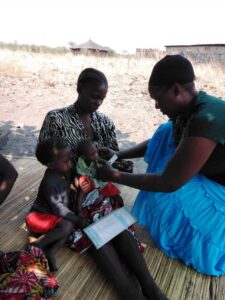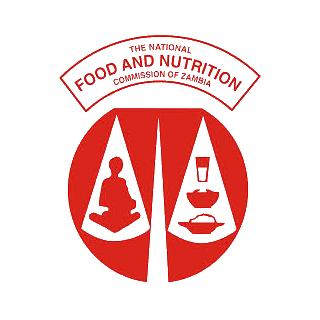
By Nancy Mukelabai
Malnutrition has remained one of the major public concerns in Zambia. The causes of malnutrition are numerous ranging from basic, immediate, and underlying factors. It is in this regard that the National Food and Nutrition Commission with support from cooperating partners have joined forces in a bid to tackle the life threatening problem among children, especially during the 1st 1000 days of life.
Recently, a total of 28 in-service health workers in Kalabo district of Western province consisting of nurses, nutritionists, clinical officers and community health assistants were trained on Integrated Management of Acute Malnutrition Outpatient Therapeutic Program (IMAM OTP). The trained staff would in turn orient their colleagues and other key partners in their respective facilities. The strategic objective was to improve the coverage and quality of priority nutrition intervention for stunting reduction.
Following the capacity building training, participants have put into action the knowledge acquired by screening children for malnutrition and manage them accordingly. The trained staff has also devised community outreach activities as effective ways of working working with communities in identifying and managing malnourished children. Health personnel are now working with community structures such as Nutrition Support Groups and Ward Nutrition Coordinating Committees (WNCCs) in ensuring that malnourished children are identified and managed, accordingly.
It is worth noting that Nutrition Support Groups play an important role in the adoption of a multi-sectoral approach in tackling malnutrition through programmes such as micro-nutrients fortification and supplementation, especially during the 1st 1000 most critical days in the life cycle of a child. The model has contributed to the steady strides made so far in fighting malnutrition and stunting levels among target beneficiaries among SUN II households.
With the 1st 1000 Most Critical Days Programme phase two (MCDP II) unfolding, a pyramid of priority interventions has been devised. The pyramid shows a minimum package of a combination of nutrition specific and sensitive interventions. Nutrition specific interventions address the immediate determinants such as care giving and parenting practices while nutrition sensitive interventions address the underlying determinants of fetal development and child nutrition and development such as food security.
The pyramid of a minimum package consists of five priority interventions. One of the priority interventions is health and nutrition which focuses on promoting good maternal, infant, young child and adolescent health, nutrition and care practices. While the objective is to strengthen quality nutrition counselling on infant and young childcare and feeding practices, one of the activities include strengthening referrals for and quality treatment of acute malnutrition.
In addition to the priority interventions, SUN II has adopted the Nutrition Support Group (NSG) model which serves as a platform for promoting the adoption of positive health and nutrition practices and the consumption of nutrient-dense and protein-rich foods at household level. These mother groups are important in achieving convergence of interventions to the target household beneficiaries for maximum impact on stunting reduction in children.
In Ndoka ward of Kalabo district, Namatindi rural health center has partnered with NSG promoters and volunteers for outreach programs aimed at screening and managing malnourished children. The approach is against the backdrop that having promoters and volunteers working directly with households of pregnant and lactating mothers plus care givers under the mentorship of field supervisors has led to an easy and positive identification of malnourished children in the communities. As promoters and volunteers are selected from amongst the target beneficiaries in line with the peer-to-peer behavior change approach on which the NSG model is anchored, reaching out to the mothers is easy because they live close to these households.
Simushi Namushi lives in Namatindi area of Ndoka ward, Kalabo district. She is a promoter in charge of Mombochima NSG. Speaking in an interview with the Communication and Advocacy Technical Working Group, Ms Namushi acknowledged her commitment in helping to monitor the growth of children and ensuring that every lactating mother is raising a healthy child.
“We are working hand-in-hand with the Ward Nutrition Coordinating Committee (WNCC) members, field supervisors, volunteers and beneficiaries in the fight against malnutrition in our community. So far so good (in terms of) response from the target population starting from lesson deliveries, participation in nutrition events and routine activities such as child growth monitoring and vaccinations.
Once we identify a malnourished child, we immediately involve the health personnel in our ward that we closely work with in combating the situation. We conduct repeated monitoring visits to the (affected) household, while helping them on food preparation and good feeding methods. And if the situation needs more attention, the child is then attended to at the district hospital as a referral from the rural health facility,” she said.
The Ministry of Health is happy with the partnership and involvement of community structures such as Nutrition Support Groups in identifying malnourished children. Namatindi rural health centre clinical officer Silenga Silenga who is one of the IMAM OTP trained health personnel has confirmed development.
“The NSGs are truly assisting in identifying children who need serious attendance in terms of illnesses and malnutrition,” he said.
Ndoka WNCC has equally acknowledged the role of NSGs in fighting against malnutrition among children. Miyombo Zhyinga of Sikutwi village is a Community Led Total Sanitation (CLTS) Community Champion. Ms Zhyinga, a WNCC member, is happy to share her perspective.
“As a WNCC member, I work with NSG mothers, volunteers and promoters in pioneering nutrition programmes for (the benefit of) pregnant and lactating mothers. NSGs learn a lot concerning good nutrition of children, consumption and good cooking methods of locally produced foods, recommended agricultural practices and water and sanitation in connection with nutrition.
“The bringing in of Nutrition Support Groups has enabled each and every mother have access to important nutrition lessons at household level even without having to travel to rural health centers for such,” she said.
And the District Nutrition Support Coordinator, Ms Inonge Nosiku, equally agrees that the existence of Nutrition Support Groups among SUN II beneficiary mothers has yielded positive results in addressing nutrition issues.
“Yes we do receive information from our promoters and volunteers on children who are malnourished and need attention. This helps us in attending to such children in good time. They may not all be referrals to the district hospital, but to the nearest rural health center for special attention and close monitoring until when the health of the child improves.
“It’s only when the situation is severe that they are referred to the district hospital,” she said.
Ms Nosiku says having NSGs has led to every member of these mother groups being each other’s keeper by taking keen interest in every child’s health in their neighborhood.
“As a result, children in the target population are attended to right at their door steps and in good time.
“The whole objective of putting in place Nutrition Support Groups is not only to accelerate the successful reach of SUN II package of interventions from the relevant sectors to address key determinants of poor nutrition. (Rather the objective) is also to help in identifying and taking action of malnourished children among the beneficiaries, as well as addressing the long distances to health facilities and the low health seeking culture among rural communities,” she said.
According to the eighth National Development Plan (8NDP) 2022-2028, government’s efforts are aimed at increasing access to health care, enhancing the nutrition status of pregnant women, improving ante-natal practices and care as well as maternal health services delivery to continue being undertaken.
As highlighted in the 8NDP, rural communities continue facing challenges in accessing health services. This is mainly due to a low health-seeking culture among the communities, low health personnel to population ratio, long distances to health facilities, inadequate supplies of medical commodities, and inadequate numbers of specialists to deal with complex medical conditions. Looking at the concerns highlighted by government, it means several interventions have to be put in place in addressing these challenges.
The National Food and Nutrition Commission (NFNC) has, among other measures, taken up the concerns of the low health seeking culture among rural communities. Most of the mothers in rural communities do not see the importance of health programs such as attending ante-natal clinics which help in monitoring a child’s growth.
Ante-natal visits also offer an opportunity for a mother to seek nutritional advice as well as receive lessons and best practices. The culture of not seeking ante-natal services results in having malnourished children in society as they are not attended to and mothers do not acquire any knowledge in improving a child’s health.
NAIS



